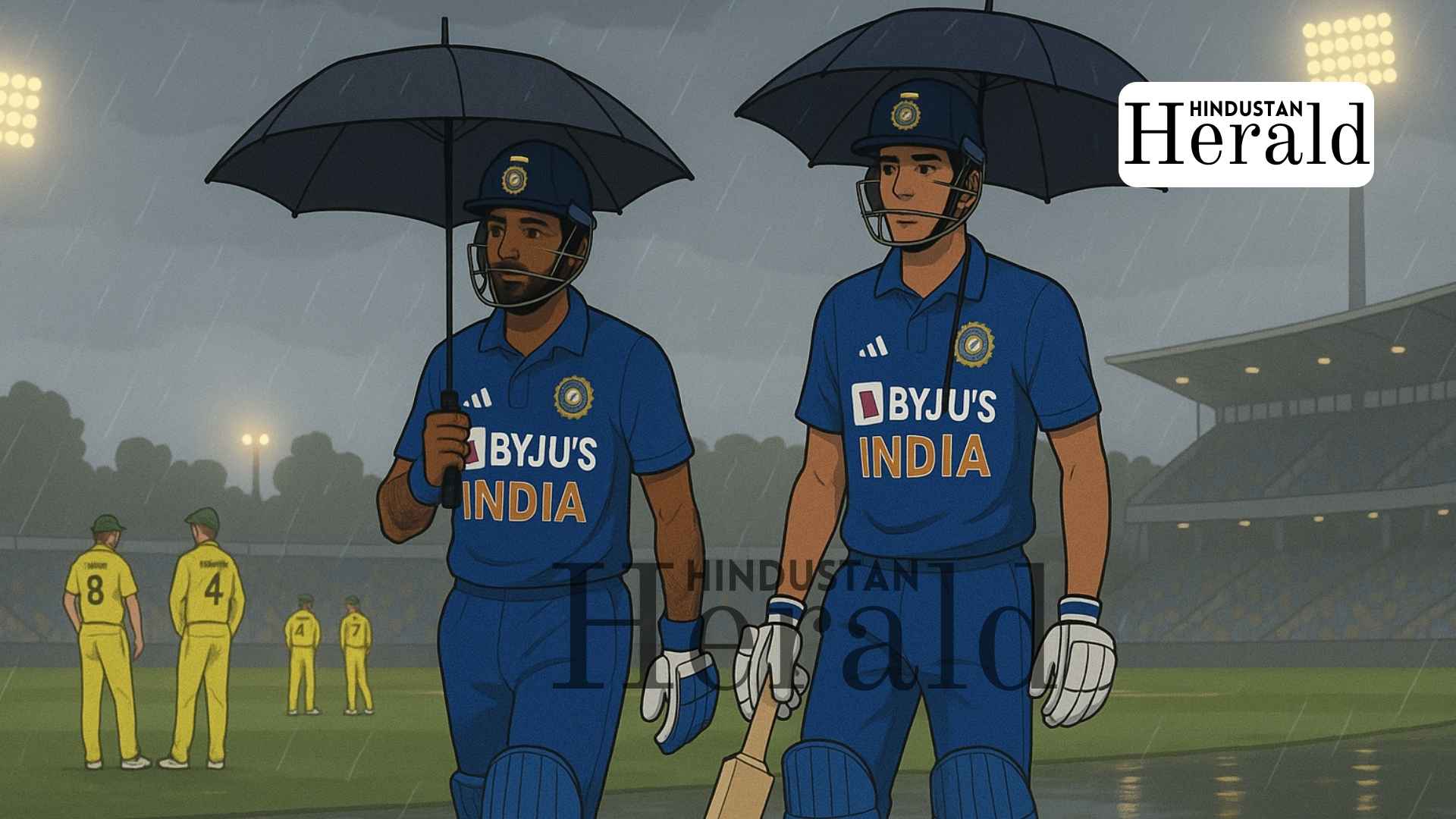Canberra, October 29: The sky over Manuka Oval didn’t look promising even before the toss. A thin curtain of grey had settled above the lights, and by the time Australia decided to bowl first, the air already smelled like rain. It was supposed to be the first spark of a long five-match T20 series between India and Australia; instead, it’s been mostly about umbrellas, damp seats, and the sound of covers being dragged across the field.
Still, for the 30 minutes that play did happen, there was enough to remind everyone why these two sides can turn even a short spell of cricket into theatre.
A Start With Intent, A Pause With Frustration
Suryakumar Yadav, captaining India again, walked out alongside Shubman Gill and Abhishek Sharma with the kind of body language that says: we’ve come to play, not just survive the weather. And that’s exactly how they began. Abhishek looked like he’d brought a bit of sunshine with him, flicks through square, a clean drive over extra cover, and one audacious pull that didn’t quite carry but made its point.
Then came Nathan Ellis, who does what Australian seamers seem born to do probe just outside off, tempt, and pounce. Abhishek misjudged the bounce, spooning a simple catch. Out for 19 off 14 balls. Five overs later, the score read 43 for one. Gill had glided his way to 16 from nine, Suryakumar on eight from seven, looking calm, patient, even. And then the drizzle turned to rain, soft at first, then steady, and soon heavy enough to end the rhythm.
The ground staff scrambled. Spectators groaned. In Canberra, when the clouds settle in, they usually mean business.
Trouble Before The Toss
The evening hadn’t started smoothly for India anyway. A few hours before play, Nitish Kumar Reddy was ruled out of the first three games with a quadriceps injury. Not a headline name yet, but a crucial one for balancing a young all-rounder who bowls brisk medium pace and bats with the composure of someone ten years older. Losing him means India will lean more on Axar Patel and Washington Sundar to cover those overs and contribute with the bat.
It’s a bit of a headache for Suryakumar, who’s trying to build a new template for India’s T20 side, younger, faster, and bolder, but still reliable.
SKY’s Moment To Reignite
For Suryakumar himself, this series carries a different kind of weight. His numbers still leap off the screen, the only T20 international batter with over 2,000 runs, an average north of 30, and a strike rate over 160. But numbers can’t tell you about rhythm, and his rhythm’s been off lately.
Irfan Pathan, in an interview with InsideSport India, put it best: “He’s a player who can turn a game in two overs. He just needs one inning to remind the world.”
In the short burst before the rain, there was a glimmer of that old SKY. The timing was there. The easy lean into drives. No hurry, no fuss. Just the sense of a man waiting to click back into his element.
A Pitch That Promised Balance, A Sky That Didn’t
The pitch at Manuka, according to Navbharat Times, was one of those rare surfaces that offered something for everyone, enough bounce for fast bowlers, but still friendly to clean hitters once they got set. You could see that early on. The ball came onto the bat, there was carry through to the keeper, and even the spinners looked like they’d find grip later on.
The problem, as everyone feared, wasn’t the pitch, it was the forecast. Canberra’s weather had been moody all afternoon. Even before the toss, the wind carried a cold bite. Once the rain arrived, it never quite left. The covers went on, came off, and then on again. By the time the umpires took their third look, the crowd had started amusing itself with chants and phone lights.
Australia Eye Home Edge
For Australia, the plan was straightforward. Bowl first, let the conditions do their work, and use the swing while it lasts. Ellis and Behrendorff did exactly that, full, straight, hinting at movement both ways. Behind them, the fielders were sharp, quick to cut off singles. Glenn Maxwell, fresh from rest, patrolled the circle like he was itching to get involved.
This is not quite a full-strength Australian team, but it’s a confident one. The home advantage still matters, especially under lights, where local bowlers understand the bounce and breeze better than visiting ones ever can.
Waiting For Play, Waiting For Answers
When the rain intensified, players drifted back into their dressing rooms. Some stretched, some scrolled through their phones, and others just stared out of the window. Out in the stands, Indian fans huddled under flags while Australian supporters joked about needing a “Duckworth-Lewis poncho”.
There’s a certain helplessness in these moments, everyone ready, everything set, and yet nothing happening.
If the match resumes tonight, it will almost certainly be a shortened affair. India might fancy that scenario; they’ve got hitters all the way down to No. 8. Australia, with their heavier middle order, would prefer a full game to let the innings breathe. Either way, this first chapter of the series has already written its theme: unpredictable, competitive, and just a bit dramatic.
What Comes Next
Regardless of tonight’s outcome, this series is more than just five T20s. It’s a soft reboot for both teams. India is quietly building life after Rohit Sharma and Virat Kohli in this format, giving space to Gill, Rinku Singh, and Tilak Varma. Australia, meanwhile, is figuring out its post–David Warner identity.
And somewhere in between all the rain delays, there’s a reminder that cricket is as much about pauses as it is about moments the waiting, the restlessness, the uncertainty before something big happens.
When play finally resumes, the crowd will roar again, the bowlers will steam in, and the night will shake off the drizzle. For now, Canberra holds its breath.
Stay ahead with Hindustan Herald — bringing you trusted news, sharp analysis, and stories that matter across Politics, Business, Technology, Sports, Entertainment, Lifestyle, and more.
Connect with us on Facebook, Instagram, X (Twitter), LinkedIn, YouTube, and join our Telegram community @hindustanherald for real-time updates.
Sports reporter covering cricket, football, and Olympic disciplines, with on-ground event experience.






